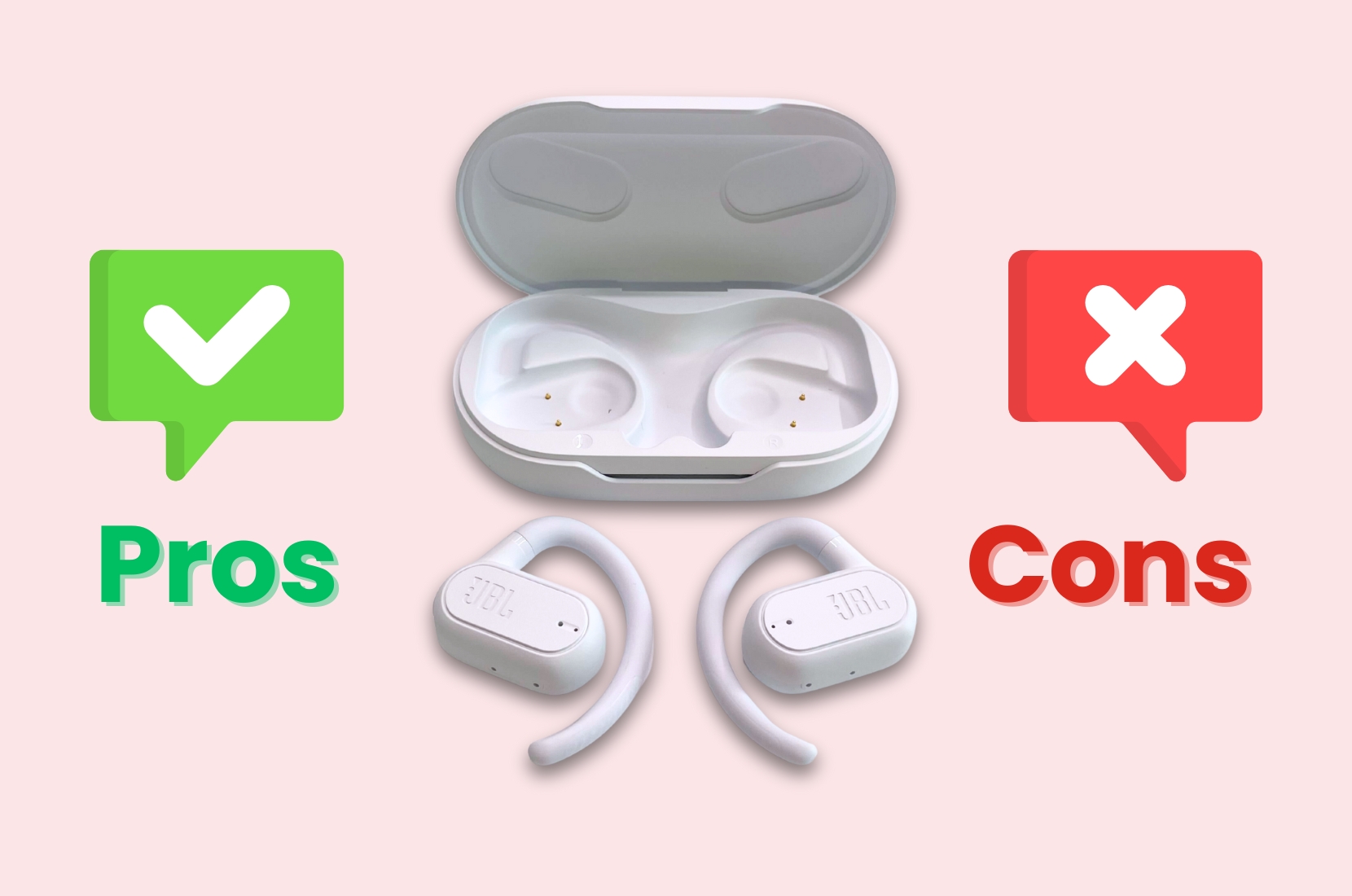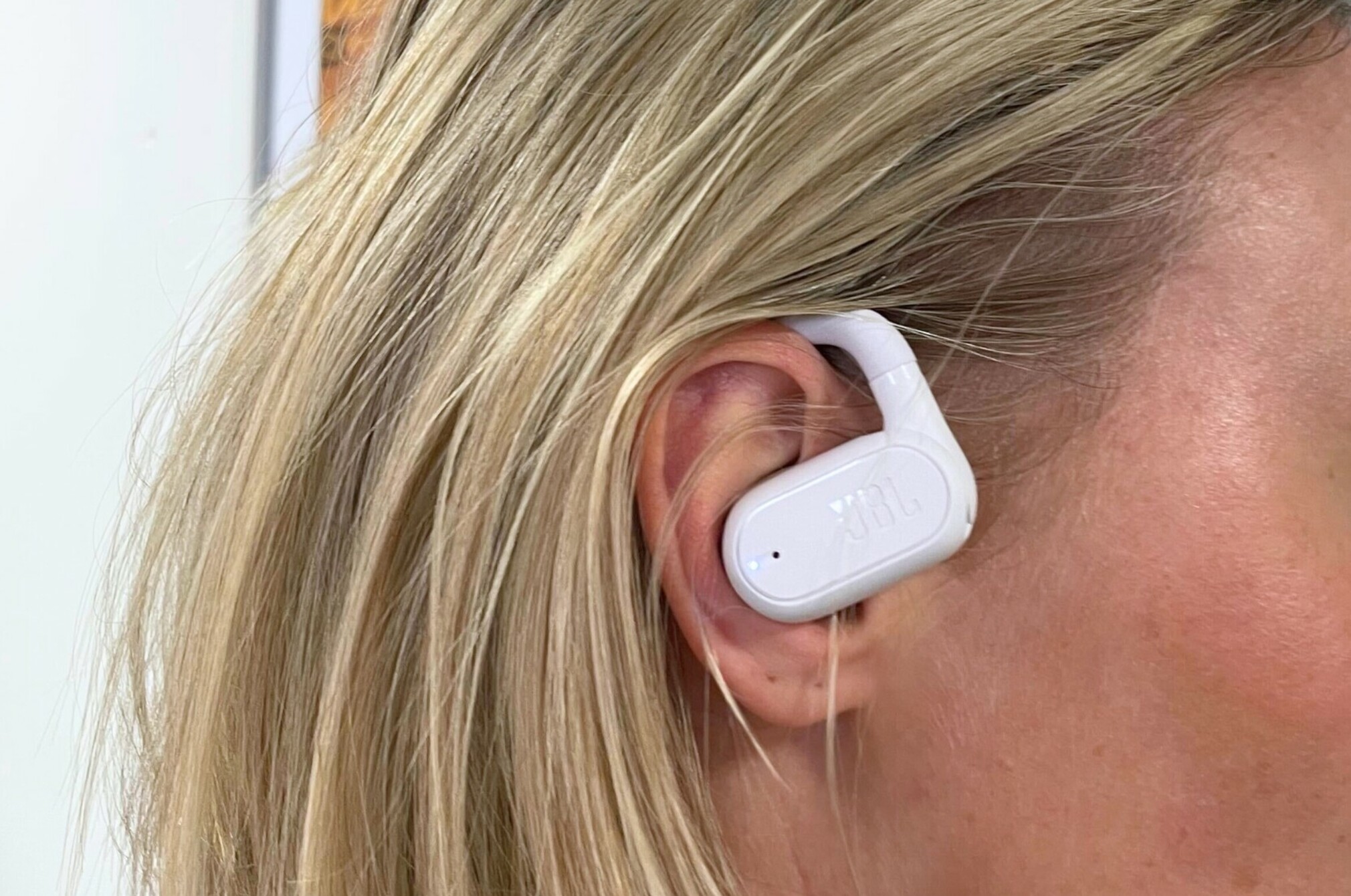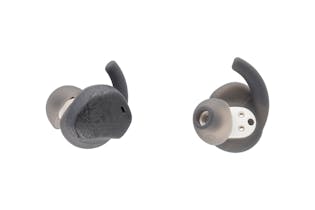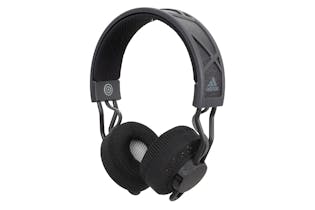JBL Soundgear Sense headphones review
Can these JBL open-ear headphones rival models that block external noise?

The JBL Soundgear Sense are different from in-ear and over-ear headphones.

Like bone conduction models, these JBL headphones have an open-ear design, sitting just outside your ears rather than inside or over them. This keeps your ears free to hear the world around you, adding safety if you’re exercising or working outdoors.
But, unlike bone conduction models, the JBLs send sound waves through the air – referred to as ‘air conduction’ – like speakers do.
In our previous tests, open-ear headphones couldn’t compete on sound quality with in- and over-ear models, which block a lot of external noise. I trialled the JBL Soundgear Sense to see if they hit the mark.
Pros and cons of the JBL Soundgear Sense

Ears remain free to hear environmental noises
Very good sound
Minimal sound leakage
Decent battery life
Lightweight, compact and comfortable
Durable and splash resistant
Straightforward controls
Secure.
Difficult to hear your audio in noisy environments
Fiddly to put on, depending on your ear shape.
Summary
For headphones that let you stay aware of what’s happening around you without significantly sacrificing sound quality, the JBL Soundgear Sense are hard to beat.
They’re the best-sounding open-ear headphones in our test. In fact, the Soundgear Sense sound significantly better than the average in- and over-ear headphones we’ve tested.
These JBL headphones are one of only four open-ear models we recommend. Yet at $199, they’re up to $184 cheaper. We got an even better deal, picking them up half price ($99).
They’re not the best for noisy environments and can be fiddly to put on, depending on your ear shape. But they’re spot on at doing what they’re designed to do. Plus, they’re comfortable, secure, durable and easy to use.
Full review of the JBL Soundgear Sense
I think open-ear headphones are great. Like other open-ear models, the JBL Soundgear Sense let me hear what’s going on around me when I’m listening to tunes while running and riding my bike. They feel much safer than in- or over-ear headphones. I also don’t have to worry about missing a knock at the door when pottering around the house listening to audiobooks.
And I really appreciate not having to take the Soundgear Sense off to have a conversation. When I bump into friends while walking my dog, I just tap an earpiece to pause the audio, then tap again to resume listening.
While the JBLs’ sound quality isn’t as good as the best in- and over-ear headphones in our test, they’re a lot better than the average. And they’re a big step up from other open-ear models we’ve tested, including bone conduction headphones. For example, they’re significantly better than the Shokz OpenRun Pro 2, which are popular with runners and cyclists. I’m a big fan of the Shokz, but the JBLs sound a lot cleaner and you feel far more immersed in their audio.
There’s minimal sound leakage, which surprised me given the Soundgear Sense’s open-ear design. You can listen at a decent volume without worrying about others tuning in.
The JBL Soundgear Sense are lightweight (26g) and comfortable. The ear hooks flex to fit as needed. And you can adjust the position of the speaker section to get it closer to your ear canals.

The earpieces of these JBL headphones don’t flatten your ears or make them hot like on- and over-ear models can. And they don’t create uncomfortable pressure like earbuds can.
Initially, I wasn’t confident that the JBLs would stay in place. They didn’t feel especially secure. Yet they stayed put even during runs and floor workouts with a lot of getting up and down. They’re a lot better, in this respect, than any in- or over-ear headphones I’ve used. The only time they fell off was when I pulled a jersey off over my head, forgetting I was wearing them.
In addition, the Soundgear Sense come with an optional neck bar that the earpieces slot into for added stability. I didn’t find it necessary for running, but it could be handy for explosive workouts with a lot of jumping.
Since the JBLs’ neck bar is optional, you can leave it off to lie back on a pillow without the earpieces being pushed out of place. That’s not the case with fixed bar models, such as the Shokz OpenRun Pro 2. Leaving the neck bar off also means you can share an earpiece with someone else.
You can also use just one earpiece at a time. That’s handy if you want to keep one ear completely free or if an earpiece has vanished down the side of the couch.
The Soundgear Sense are robust and splash resistant, with an IP54 rating. They’ll cope if you drop them, and they can handle sweat and light rain.
The controls are straightforward. You can play and pause, skip tracks, adjust the volume and take calls easily with a tap or two of an earpiece. And in the app, you can customise which earpiece does what, choose a sound profile (e.g. studio, jazz, vocal) or create your own with the equaliser, limit the volume to 85dB, and more.
The battery life is decent. I got 7.5 hours from a full charge, 4 hours from a 15-minute charge and two full recharges from the case.
I’ve only found a couple of drawbacks. It can be difficult to hear your audio in noisy environments since the Soundgear Sense are an open-ear design. That’s to be expected. But you need to take care not to damage your hearing by turning the volume up high to compensate – you’d be wise to limit the volume in the app.
I find them quite fiddly to put on too. If your ears sit close to your head (as mine do), it might take two hands to get each earpiece positioned right. And they make my ears stick out a bit. My colleagues didn’t experience these issues.
Overall, JBL has done a great job with the Soundgear Sense. These headphones strike a nice balance between delivering quality audio and letting you stay connected with your surroundings.
We've tested 194 pairs of headphones.
Find the right ones for you.
Adidas

Adidas

.jpg&w=315&q=75)
Member comments
Get access to comment